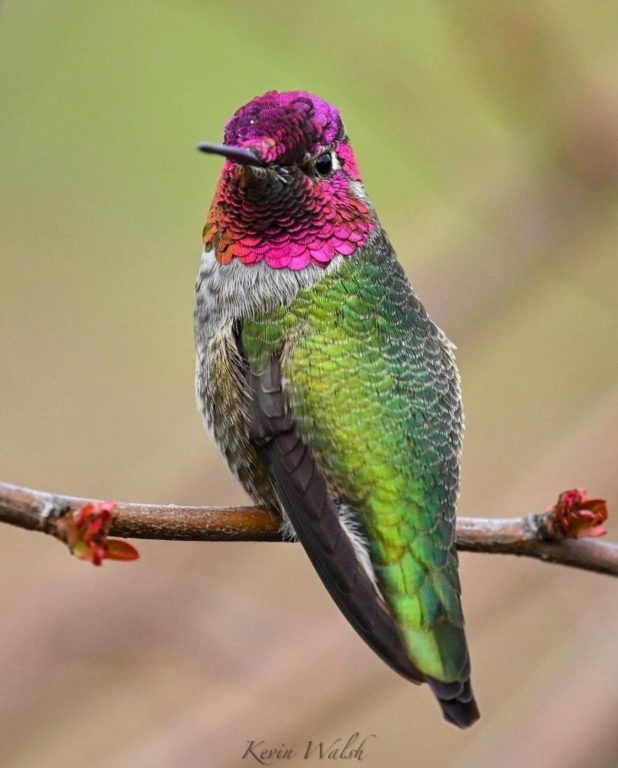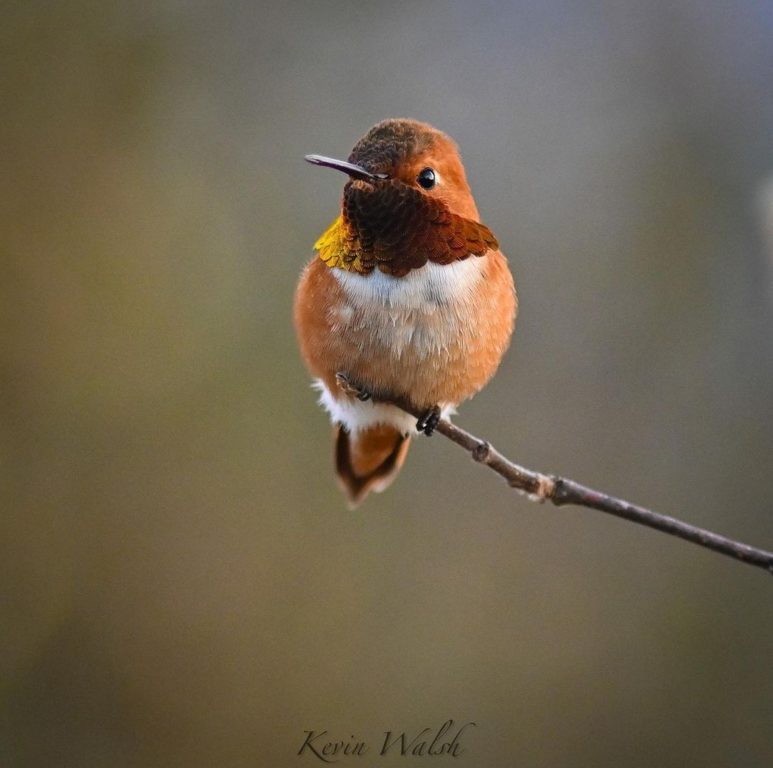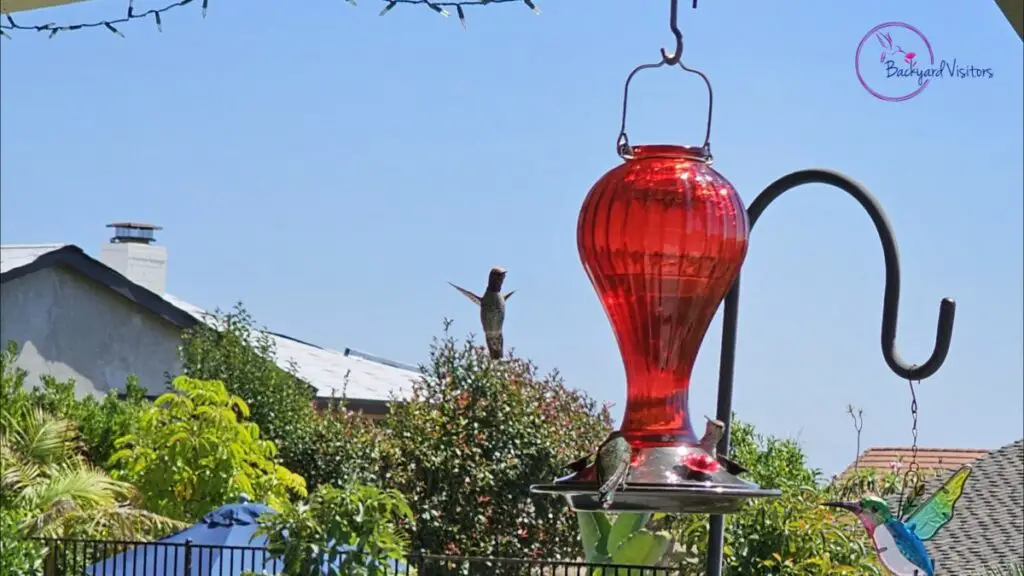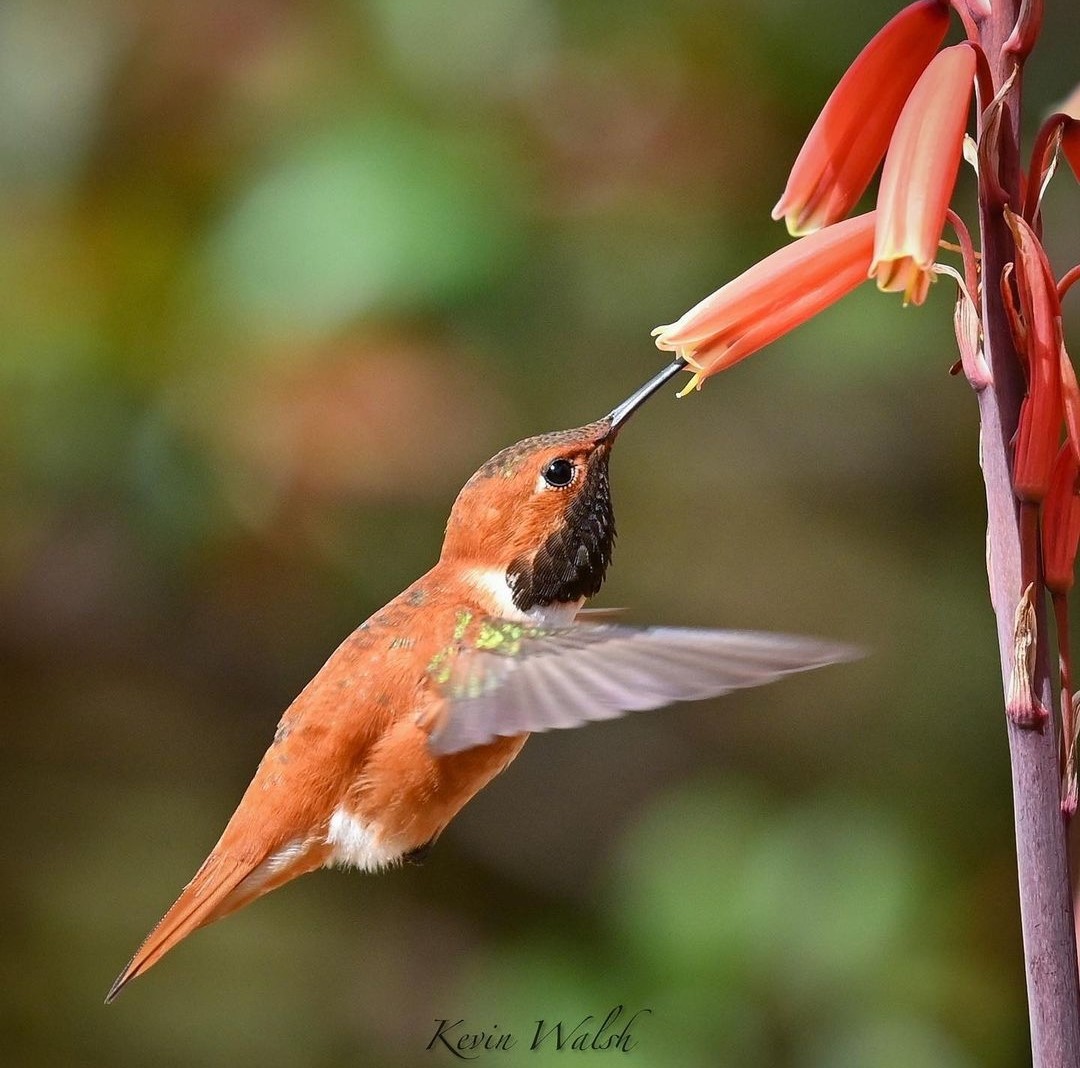This post contains affiliate links.
Every year I see hummingbirds return to my backyard and sometimes I think I remember some of the returning hummingbirds from previous years, so I did some research to see if I was right.
This article answers several questions about hummingbird migration and their propensity to follow prior migration patterns.
Why Do Hummingbirds Migrate?
Hummingbirds’ summer and winter migration patterns are influenced by the length of daylight, known as photoperiodism, food availability, the urge to reproduce, and survival.
The goal of spring migration is to return to the area of its own birthplace for procreation, while winter’s goal is to avoid harsh winter conditions.
Hummingbirds migrate for several reasons. Below are the main factors driving hummingbird migration:
Circadian Rhythm: Hummingbirds are small, warm-blooded creatures, relying on the circadian rhythm, a 24-hour cycle that prompts both summer and winter migration.
A component of circadian rhythm, known as photoperiodism, is a mechanism that compares the length of day to the length of night, triggering hormonal changes leading to migratory behavior.
As daylight hours shorten in the fall, it signals to hummingbirds that it is time to migrate south for the winter. As daylight gets longer in the spring, it signals to hummingbirds to migrate north to breed.
A hummingbird’s migration journey begins when they sense changes in daylight duration as well as variations in the availability of flowers, nectar, and insects. These environmental cues, combined with their instincts, influence their decision to migrate.
Hummingbirds migrate north in search of their breeding habitats. The summer provides an abundance of nectar from blooming flowers and a variety of insects to eat. However, as winter approaches and temperatures drop, food becomes scarce, and some begin their migration south.
Food Availability: Hummingbirds primarily feed on insects for protein and nectar from flowers. During migration, they follow the blooming patterns of specific flowers to ensure a continuous food supply. When flowers stop blooming in their breeding grounds, hummingbirds must move to more temperate regions where nectar-rich flowers and insects remain available.
Procreation: Hummingbirds also migrate to breed near their own birthing locations, looking for suitable conditions to nest and raise their young. Many species breed in the northern parts of North America during the summer and then migrate south to Central America or even as far as South America for the winter months.
See my article: Hummingbird Parents: (Mating to Nesting)
The arrival of hummingbirds in the spring is a widely anticipated event. As spring progresses, hummingbirds are reported as far north as Canada and Alaska.
Survival: Winter migration allows hummingbirds to avoid the harsh winter conditions, which can include freezing temperatures, limited food sources, and reduced daylight hours. By migrating to warmer climates, they increase their chances of survival during the long, cold winter months.
Migrating north is because of the increased temperature and dearth of flowers under the harsh conditions of summer and to return to their own birthplace for nesting and raising their family.
Many hummingbirds spend the winter south of the United States in warmer regions, such as Central America or Mexico, to escape the harsh winter conditions. Then they fly solo, embarking on an incredible journey northward to their breeding grounds. This migration can begin as early as February, with the males usually being the first to arrive.
During migration, hummingbirds face some demanding challenges. Their tiny hearts can beat up to 1,260 times a minute, and their wings flap an astonishing 15 to 80 times per second. To prepare for this incredible journey, they often gain 25–40% of their body weight by feeding on nectar and insects.
Hummingbird spring migration can be quite challenging, as they must contend with strong cold fronts moving over the Gulf of Mexico. This brings headwinds and heavy rain, making flying difficult. For those who choose to migrate across the Gulf of Mexico, food becomes scarce, especially across open waters.
As hummingbirds migrate south for the winter, they follow familiar paths they have flown before. These expert navigators use tailwinds to conserve energy and fly faster. On average, they can cover about 20-30 miles per hour in a direct flight.
Some hummingbird species, such as the Anna’s and Rufous hummingbirds, may choose to over-winter and not migrate south for the winter, becoming year-round residents and enduring the harsh cold weather. They rely on winter-blooming flowers and hummingbird feeders to sustain their energy and keep them alive during the rough seasons.

Photo by: Kevin Walsh

Photo by: Kevin Walsh
Some hummingbirds are very cold-tolerant and can be seen in northern states all winter.
Rufous hummingbirds are very cold tolerant and have been documented by eBird.org in temperatures of -9 degrees Fahrenheit with a wind chill factor of -36 degrees Fahrenheit.
See my articles:
- How to Help Hummingbirds in Cold Weather
- Should I Keep My Hummingbird Feeders Out During the Winter
- 11 DIY Ways to Keep Hummingbird Nectar From Freezing
Territory and Competition: Migration can help reduce competition for limited resources such as food and breeding sites, as hummingbirds are territorial. During the winter, they can relocate to various areas to avoid competing with other hummingbirds for the same resources.
Hummingbirds migrate to avoid severe weather conditions, provide a steady supply of food, promote successful reproduction, and find nesting locations that will improve their chances of surviving. However, their number one goal for migrating is procreation.
Hummingbird migration is a remarkable phenomenon driven by a combination of natural cues and instincts. They travel alone, conserve energy, and brave challenging conditions. Migration patterns may vary depending on the time of day, the weather, and the availability of food.
How Do Hummingbirds Know When to Migrate?
Hummingbird migration is triggered by photoperiodism, the duration of daylight in a 24-hour period. As the sunlight hours lengthen or diminish, it causes a hormonal change in the hummingbird, sending a signal that it is time to migrate north or south, respectively.
Photoperiodism is a critical environmental cue that many organisms use to track the changing seasons.
In many organisms, photoperiodism serves as the primary trigger for various seasonal events, such as flowering, reproductive cycles, and migration.
Photoperiodism, which refers to the number of daylight hours a hummingbird is exposed to each day, coincides with seasonal variations in sunshine and has a direct effect on hummingbird migration.
As the days get shorter, hummingbirds know to travel south where it is warm for the winter and as the days become longer, they know to migrate north in the spring to breed.
Do not be confused between circannual rhythm and photoperiodism.
Circannual rhythm is a broader term that encompasses a range of biological responses to seasonal changes, while photoperiodism is a specific environmental cue related to the length of daylight in a 24-hour period and is often a key component of circannual rhythms.
Photoperiodism is commonly referred to as instinct, which is decreased daylight hours or increased daylight hours depending on the time of year that signals the hummingbird to embark on their extensive bi-annual migratory journey.
To further explain these fundamental components, think of circannual rhythm as the 365 day calendar on your wall, circadian rhythm is the 24 hour clock on your wall and photoperiodism is the sundial that all work together allowing organisms to sense and respond to variations in day length and the changing seasons.
Hummingbirds use the sun’s position in the sky to stay on course during migration. Their brains have a pineal gland, which is sensitive to light and helps them track the sun’s movement throughout the day.
As the migration seasons begin, hummingbirds start gaining weight to help fuel them through their long migration journey.
Do Hummingbirds Return to the Same Place Each Year?
Hummingbirds return to the same feeders, gardens, and yards every year, often migrating to these exact same locations to feed and nest nearby.
Studies show through years of scientific research that hummingbirds do indeed return to the same location and feeders each year. They will often migrate north to breed and arrive at the exact location on approximately the same date they visited previously.
This information is gathered from banding practices, which study and monitor hummingbird populations, their behavior, migration patterns, and overall health.
See my article: 3 Reasons Why Hummingbirds Are Banded
Interestingly, this habit of returning to the same location every year not only applies to where they are going to spend the summer or winter but also to the feeding stations they visited in specific locations along their migration route.
A hummingbird’s migration journey begins when they notice changes in the length of the day, which is called photoperiodism, and fluctuations in the supply of flowers, nectar, and insects. Their decision to migrate is influenced by these environmental cues as well as their instincts.
Hummingbirds are sensitive to changes in daylight hours during specific times of the year. These changes trigger hormonal responses that guide them on their migration routes. They use the position of the sun as a compass, helping them stay on course during their long journeys.
Hummingbirds have remarkable memories and navigational skills. They use their keen visual memory to recognize familiar landmarks like coastlines, mountains, rivers, and even highways. This cognitive mapping allows them to travel with remarkable accuracy back to their preferred areas.
See my article: Hummingbird Adaptation and Remarkable Ability to Locate Food
Additionally, hummingbirds rely on their sense of smell and hearing to guide them back to familiar locations. By using scent cues and recognizing the sounds of their surroundings, they are able to find their way back to the same feeders or breeding grounds they used in previous years. It has been noted that females use the same trees for nesting.
See my article: Can Hummingbirds Detect Scents: A Complete Guide
Use brightly colored feeders with red components and homemade hummingbird nectar without red dye to attract hummingbirds. This helps to ensure they will return every year along their migratory path.
See my article: Red Hummingbird Feeders: (Essential or Optional)

My hummingbirds love this one!
Keep your hummingbird feeders in the same location year after year to assist them with their yearly travels. Their annual routines play a significant role in their ability to remember and revisit feeding stations.
Do Hummingbirds Nest in the Same Area Every Year?
Hummingbirds return to familiar previous nesting areas annually to breed and nest; however, they do not use previously built nests. Females build new nests within the same general proximity as the year before.
Every year, hummingbirds return to the same region or habitat during the breeding season. The female hummingbird constructs the nests and builds the new nest in close proximity to the old one from the previous year.
Hummingbirds embark on long-distance spring migrations annually and use their memory to guide them to look for familiar locations, landscapes, tubular-shaped nectar-producing flowering plants, and nesting areas.
Each year during spring migration, male hummingbirds are the first to migrate north ahead of the females. The female hummingbirds then migrate north to their breeding grounds and build new nests. They scout out different trees or bushes within the same general vicinity of their previous nesting area. Female hummingbirds like to revisit old stomping grounds, but do not use the exact same spot as the year before.
Various materials, such as plant fibers, moss, lichen, spider silk, and other tiny soft materials, are frequently used to build hummingbird nests. Due to outdoor element exposure, these nests may fall apart over time; therefore, it is not practical for hummingbirds to reuse the same nest for multiple broods.
After a female hummingbird has laid her eggs, incubated them, and the babies have fledged, the nest is abandoned. The nests are designed for one-time use.
Researchers credit hummingbirds’ ability to find their way back to their favorite nesting grounds by relying in part on the earth’s magnetic field, which acts like a natural compass. They also use the position of the sun to guide them.
Additionally, hummingbirds use topographic cues, such as distinctive landmarks or geographical features, to pinpoint their destination. There is also speculation that a hummingbird’s keen sense of smell can help them navigate back to nesting locations.
See my article: Can Hummingbirds Detect Scents: A Complete Guide
While hummingbirds do return to their favorite nesting areas year after year, they are not critical about the exact location. That is why you may have the joy of watching a hummingbird go from egg to hatchling to fledgling one year and not think that they have returned the next year. Actually, they have returned, however may not be in the same specific location but in the same general vicinity.
The hummingbirds may not be in your yard, but they are probably in your neighbor’s yard, so keep those feeders cleaned and filled!
See my article: Red Hummingbird Feeders: (Essential or Optional)
Check out my other posts on Hummingbird Questions
Happy Yearly Repeat Hummingbird Watching!
Backyard Visitors participates in affiliate programs which compensate us for referring traffic.


